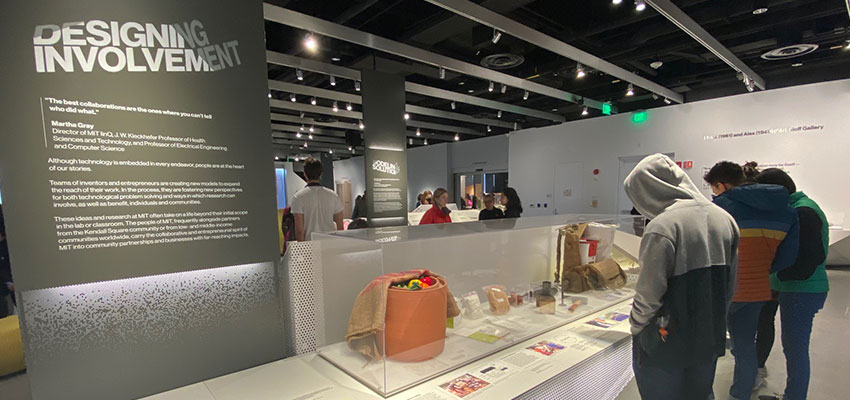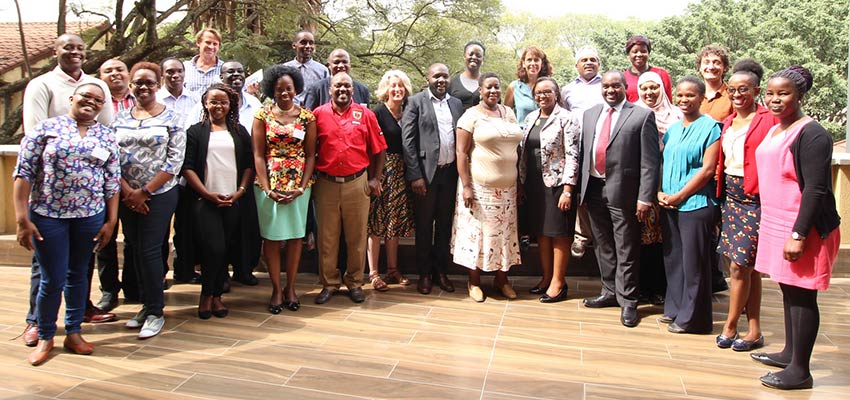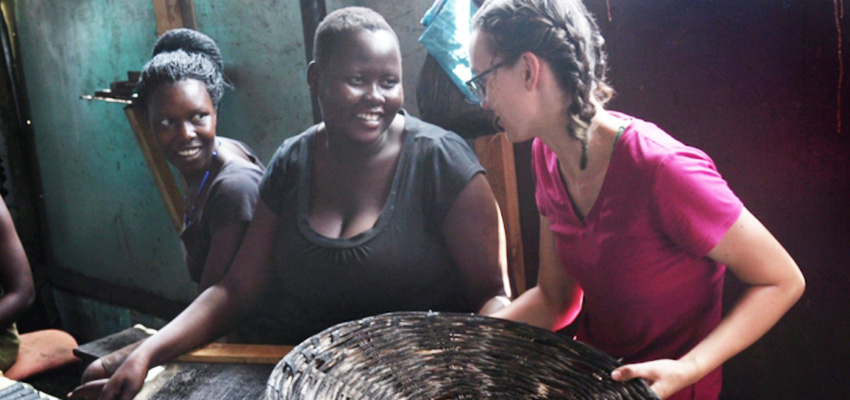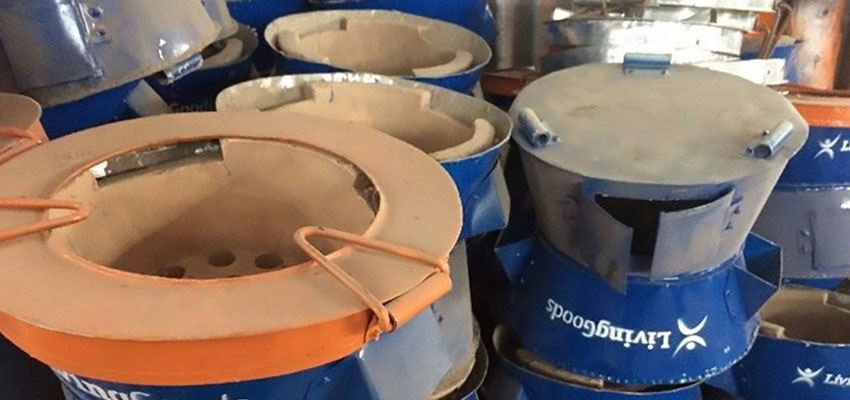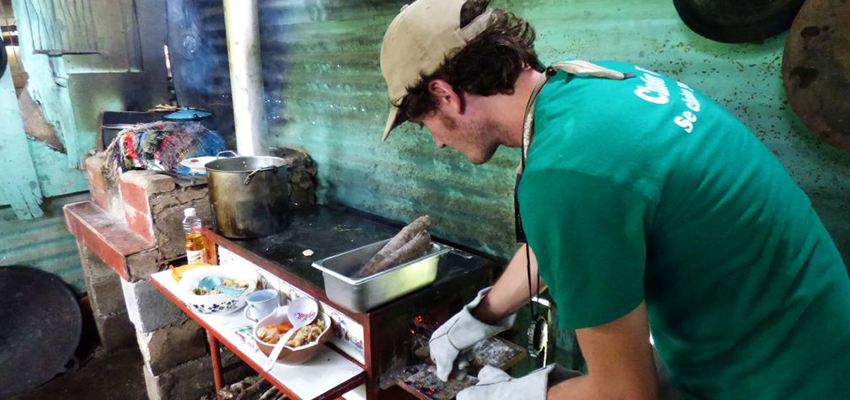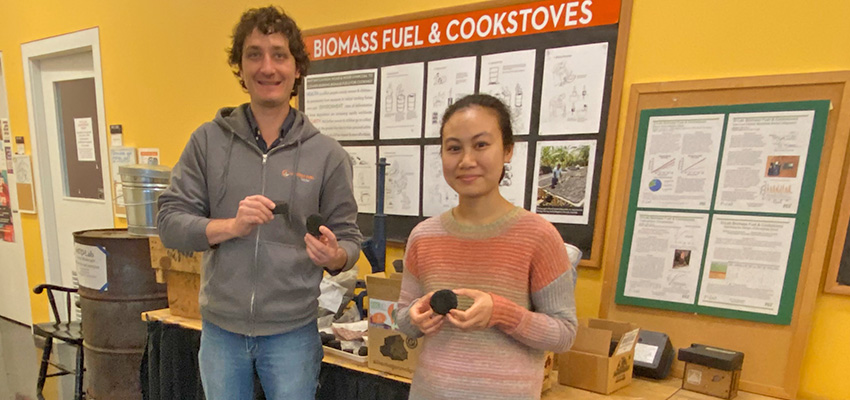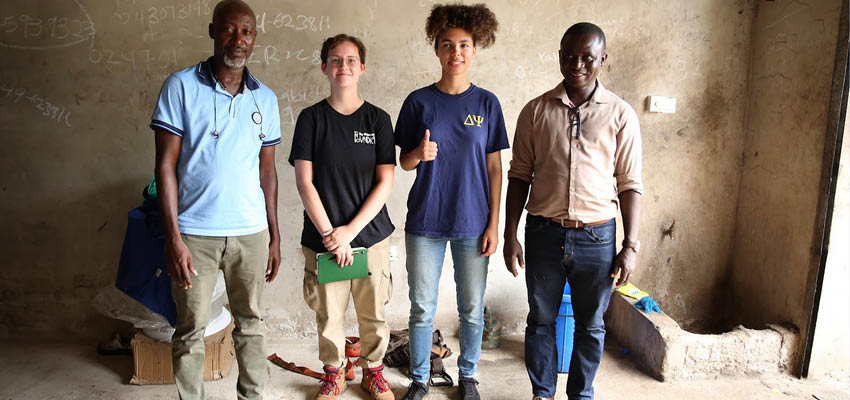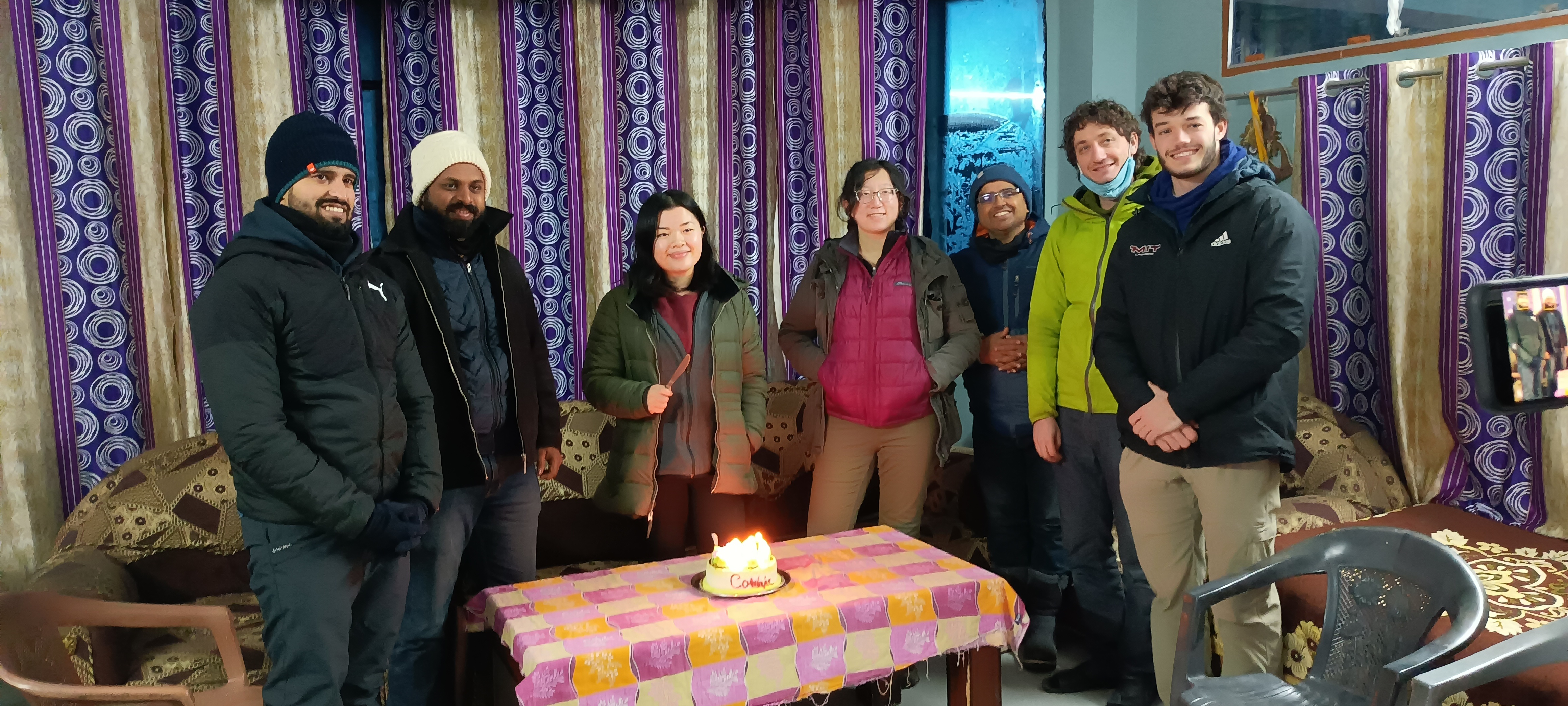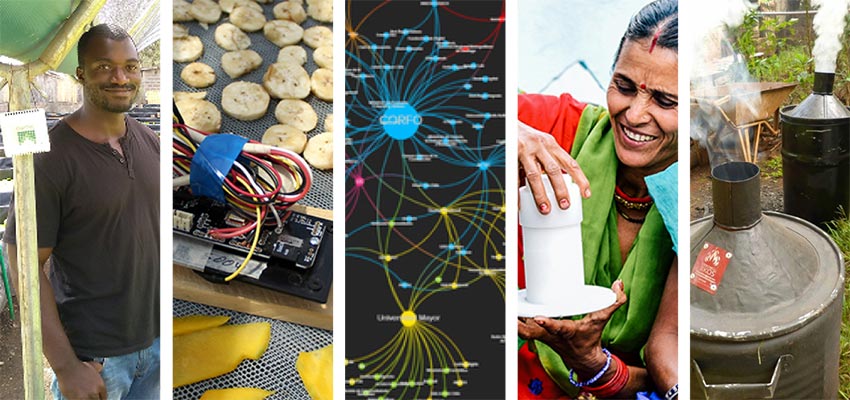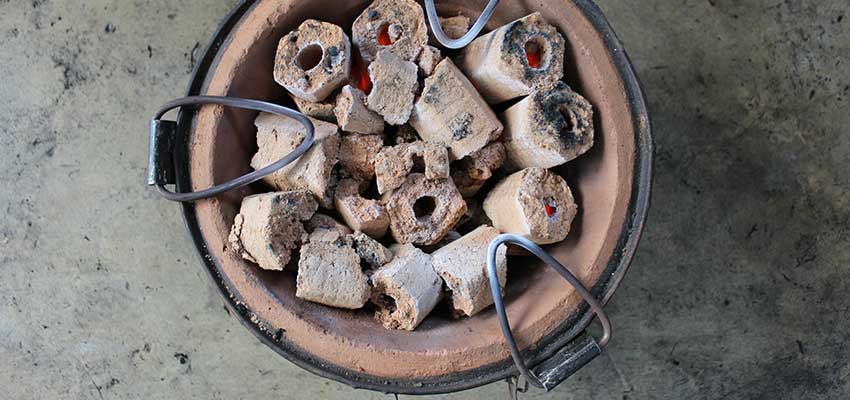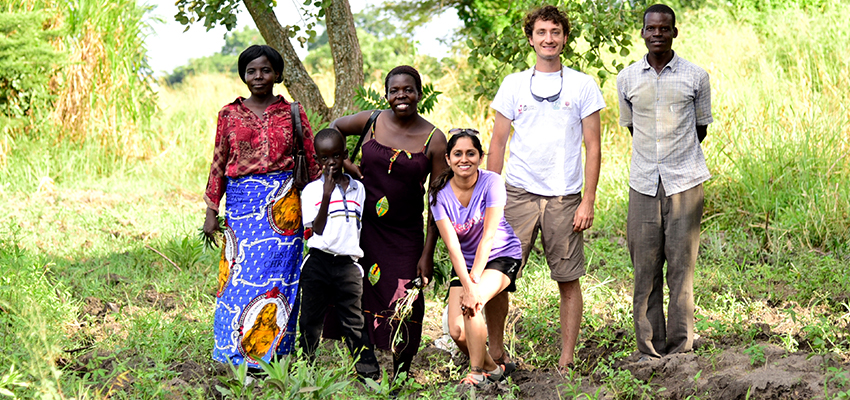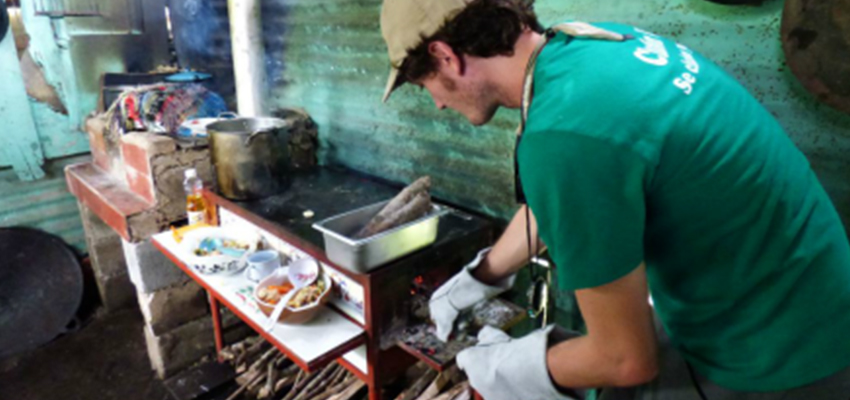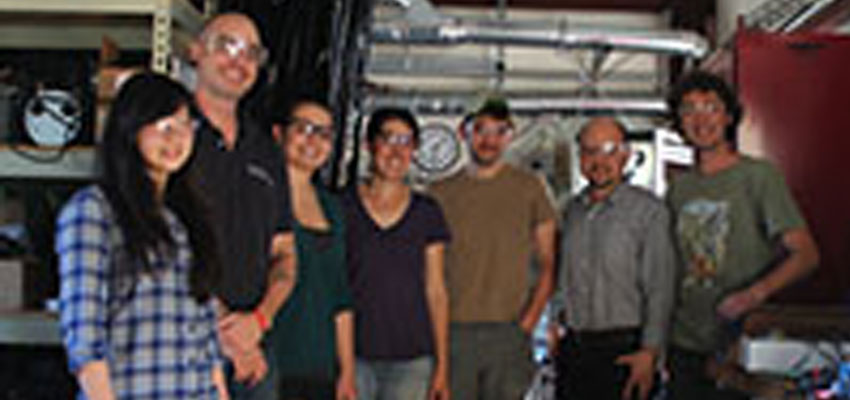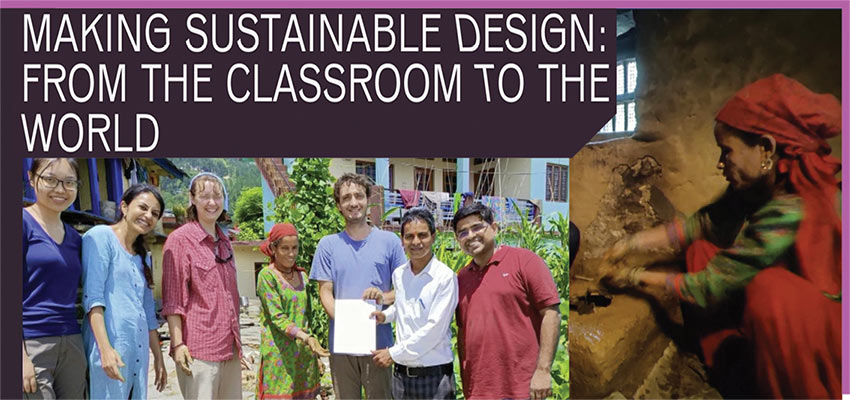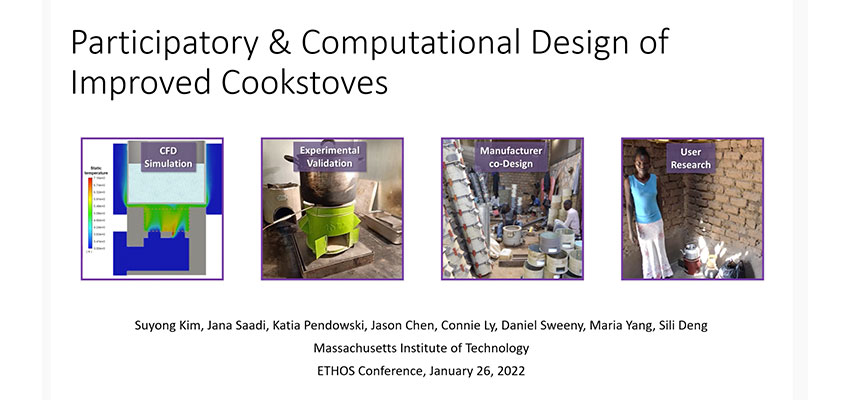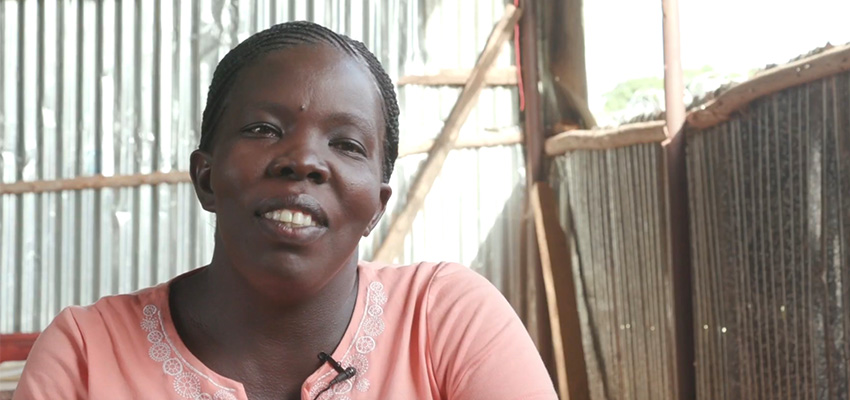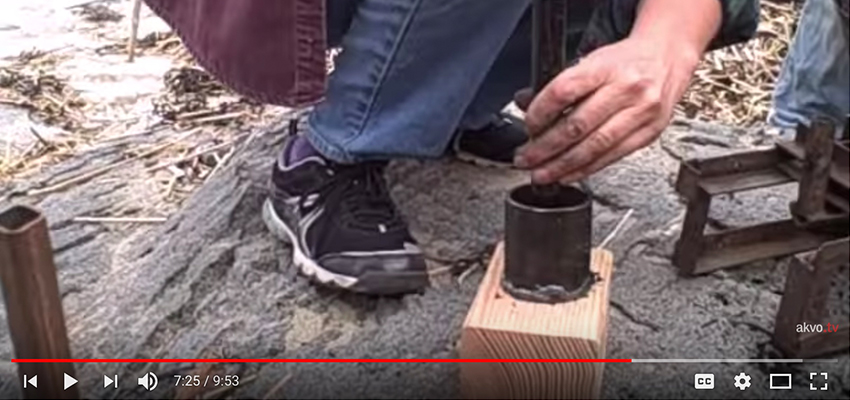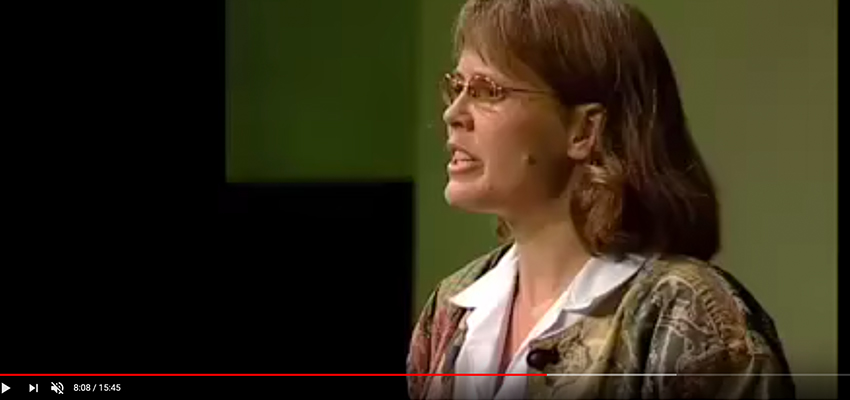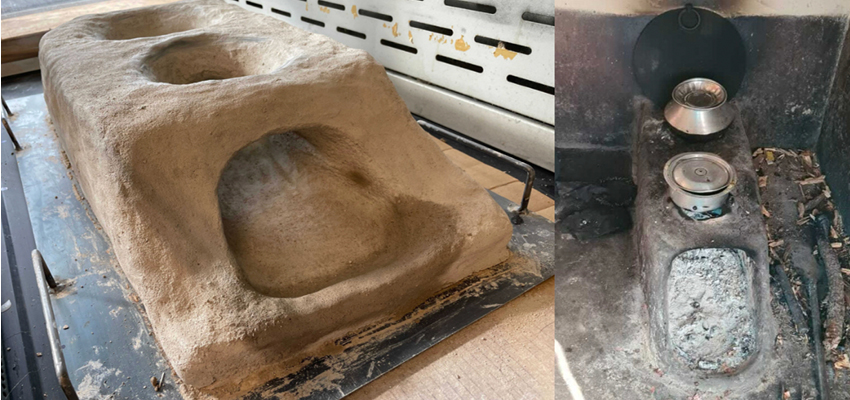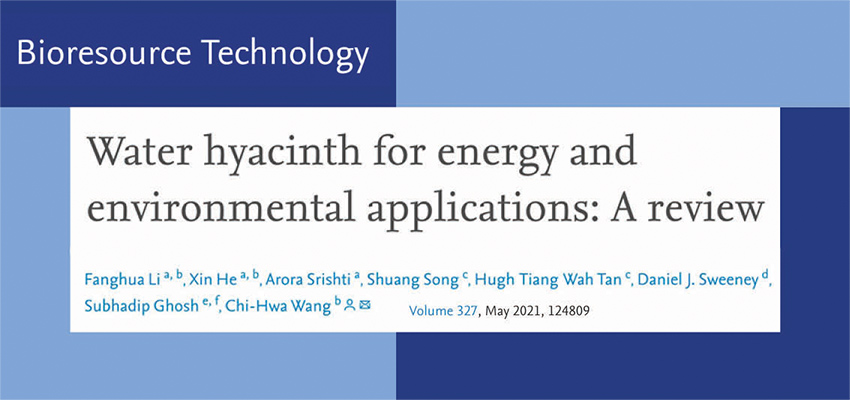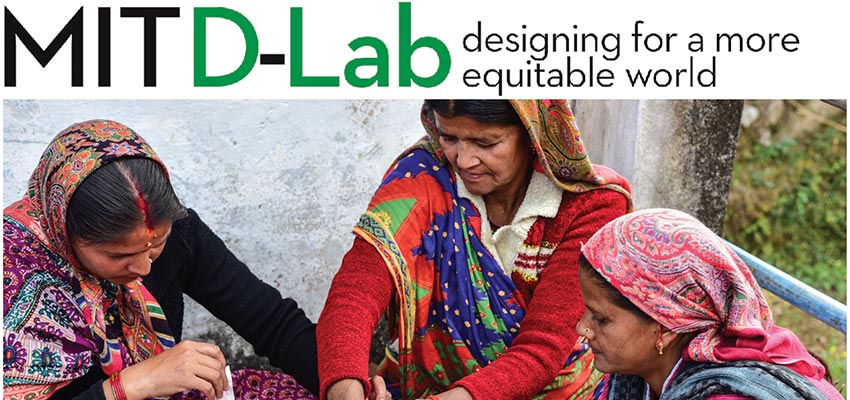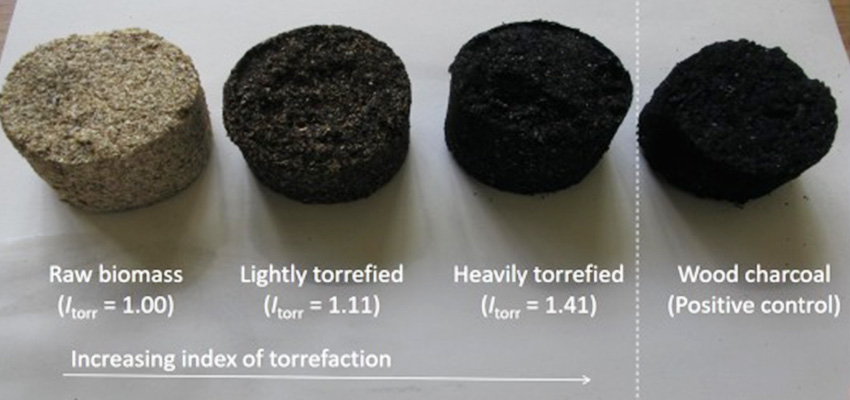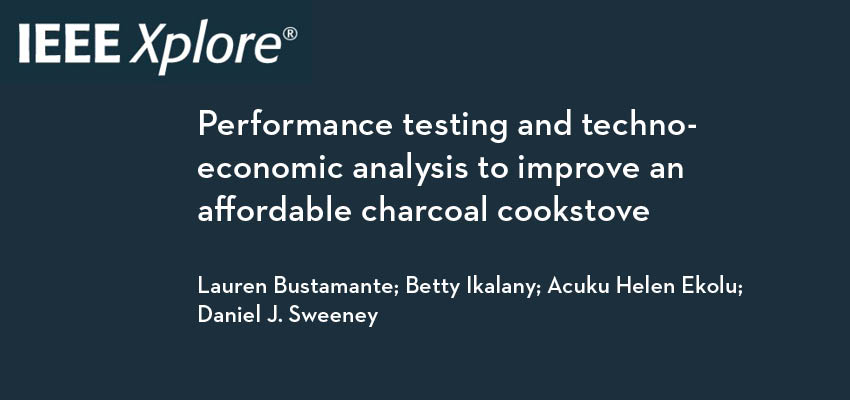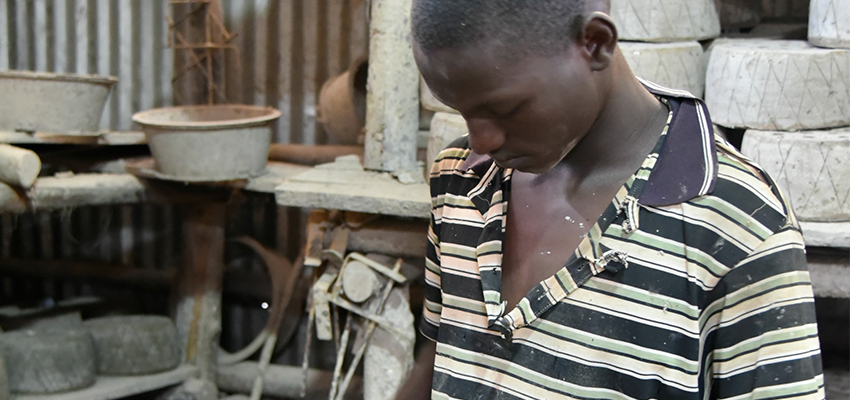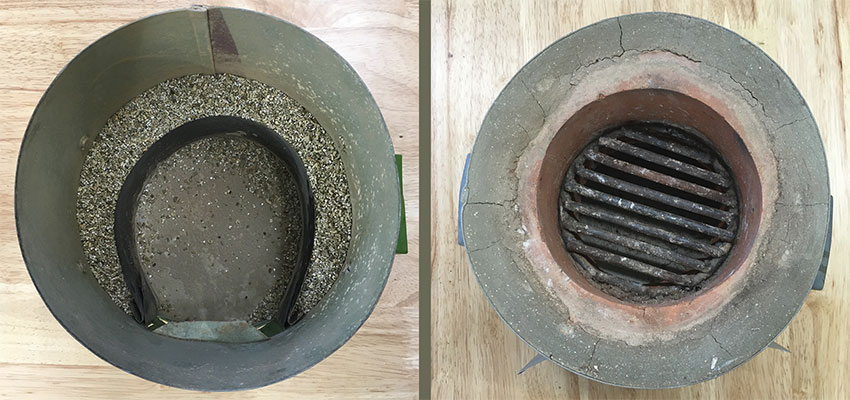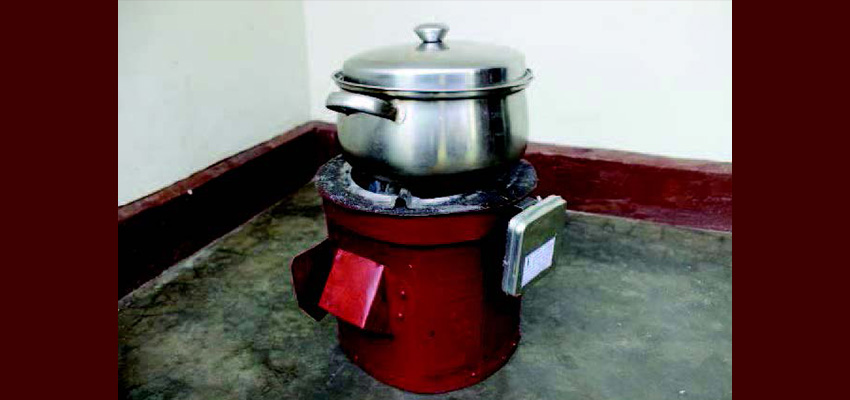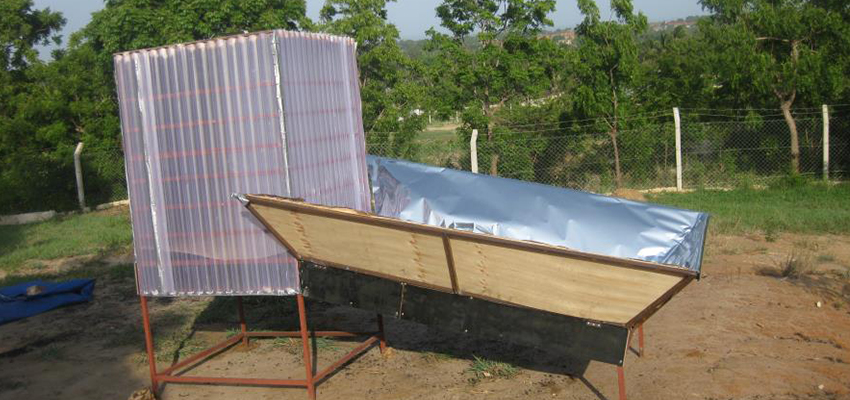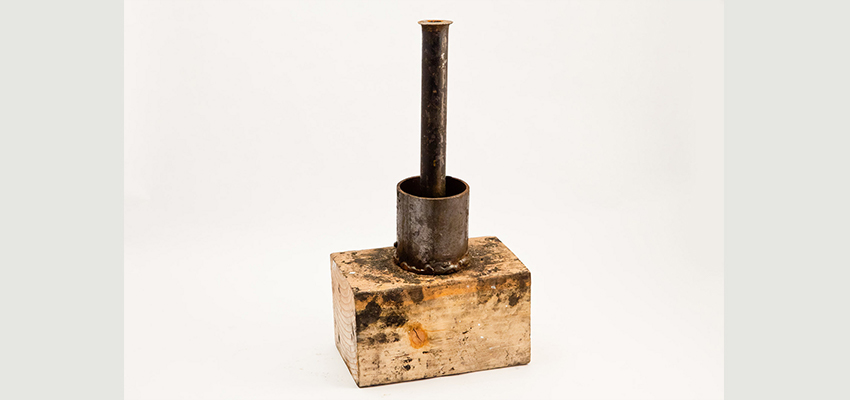Nearly half the world relies on burning solid fuels like wood, charcoal, dung, and crop residues for household cooking and heating [1]. Lack of access to efficient and clean technologies results in 25 percent of global black carbon emissions and nearly 4 million deaths per year from exposure to household air pollution [2,3]. Major efforts to mitigate these negative impacts have fallen short because one-size-fits-all solutions are often not affordable or suitable to local preferences, service delivery is unreliable, and subsidies are unsustainable [4–8]. Existing products have suffered from an insufficiently rigorous approach to testing how different designs perform or how they could be improved [9,10]. Consequently, low-income communities continue to use locally-manufactured products that are affordable and suitable, but often inefficient and highly polluting [11]. Innovative approaches to promote the design of high-performance products for cooking, space heating, water heating, and food preservation can thus have a significant impact on the health of individuals and the planet, as well as on global energy sustainability.
To respond to these challenges, the Deng Energy and Nanomaterials Group (Professor Sili Deng, PI) and the Ideation Lab (Professor Maria Yang, PI) from the MIT Department of Mechanical Engineering, along with MIT D-Lab (Dr. Daniel Sweeney, co-PI) propose a new hybrid approach, combining participatory design and computational modeling to develop high-performance household energy technologies for and with people living in poverty (Figure 1). The combination of participatory design approaches to assess user behavior with advanced design and engineering tools will lead to improved performance and adoption of energy products in low-resource settings, ultimately affecting household emissions, economic burdens on families and the following MathWorks Seed Fund grand challenges: (1) Design and Manufacturing Innovation, (2) Health of the Planet, and (3) Global Energy Sustainability. We propose a preliminary investigation of the following long term research questions:
- Can a hybrid computational and participatory design approach be applied to household energy products to improve efficiency and emissions, and achieve sustained use?
- What are the sensitivities of fundamental design parameters on efficiency and emissions performance of low-resource household energy technologies?
- To what extent does this hybrid approach provide research and local practice with an improved set of modeling tools to develop solutions that meet the needs of users?
This research will leverage the DENG’s expertise in combustion and emissions modeling, using a computational approach that captures heat release during combustion and flow dynamics to carry out sensitivity analysis and design studies. Reduced-order models will then be generated using MATLAB software, connecting design parameters (e.g. insulation, air entrainment) to performance indicators (e.g. thermal efficiency, emissions indices), as demonstrated by previous studies that the design parameters can be automatically tuned to optimize the performance of internal combustion engines [12]. D-Lab is a pioneer in collaborating with underserved communities to design and evaluate affordable household energy technologies [13–16]. D-Lab’s BurnLab was founded by Dr. Sweeney and will be used for model verification and validation testing (Figure 2) [13]. The Ideation Lab and MIT D-Lab will take a participatory design approach by working collaboratively with local manufacturers of existing cookstoves to gather data on existing and prospective use and context [17], increasing potential for adoptability and sustained use. The eventual output of the modeling component will be an accessible set of design tools and guidelines for household biomass energy product manufacturers. As a real-world demonstrative case for the hybrid approach, this project will investigate improvements to the Kenya ceramic jiko, an affordable cookstove with low-efficiency and high carbon monoxide emissions that is manufactured in the hundreds of thousands annually across East Africa, and the design of which has been unchanged since the 1980s [10,18] (Figure 2).
Activities during the first year of the project will focus on developing the computational and participatory design tools. A graduate RA from the DENG Lab (Suyong Kim) will develop a CFD simulation, which captures the temperature distribution, solid fuel combustion, and emissions from a household-scale energy appliance. D-Lab researchers will support this activity by gathering experimental validation data. Concurrently, Dr. Sweeney, and a graduate RA from Ideation Lab (Jana Saadi) will lead the data collection for user needs and preferences and link the findings from the field to the computational design process. Merging the two components during year two, a hybrid design approach will be developed which uses reduced-order models that draw from both the simulation and user research. The approach will be demonstrated by working with D-Lab’s partners in East Africa to improve upon the Kenya ceramic jiko. A design tool based on this approach will be published and disseminated through D-Lab’s relevant practitioner and manufacturer networks. The graduate DENG RA and direct-funding UROP students will carry out the computational modeling and optimization and undergraduate/graduate students in the D-Lab energy courses created by Dr. Sweeney and overseen by PI Yang, 2.651/EC.711 and EC.712/EC.782, and with Ideation graduate RA, will participate in the user research and experimental activities. All students engaged in this project will have the opportunity to join a guided field visit in East Africa.

Figure 2: Examples of D-Lab household energy projects that are relevant for this research. Clockwise from upper left: An improved jiko cookstove user and product adoption study participant in Soroti, Uganda. A family participating in home heating research gathers around an indoor open fire in Uttarakhand, India. Local production of Kenya ceramic jiko cookstoves in Kampala, Uganda. Household energy product testing at D-Lab’s BurnLab facility.
References
1. Bonjour S, Adair-Rohani H, Wolf J, Bruce NG, Mehta S, Prüss-Ustün A, et al. Solid Fuel Use for Household Cooking: Country and Regional Estimates for 1980–2010. Environ Health Perspect [Internet]. 2013 May 3;121(7):784–90. Available from: http://www.pubmedcentral.nih.gov/articlerender.fcgi?artid=3701999&tool=pmcentrez&rendertype=abstract
2. Bond TC, Doherty SJ, Fahey DW, Forster PM, Berntsen T, DeAngelo BJ, et al. Bounding the role of black carbon in the climate system: A scientific assessment. J Geophys Res Atmos [Internet]. 2013 Jun 16 [cited 2013 Nov 8];118(11):5380–552. Available from: http://doi.wiley.com/10.1002/jgrd.50171
3. World Health Organization. Burning Opportunity: Clean Household Energy for Health, Sustainable Development, and Wellbeing of Women and Children [Internet]. Geneva: World Health Organization; 2016. 1–113 p. Available from: https://apps.who.int/iris/handle/10665/204717
4. Aung TW, Jain G, Sethuraman K, Baumgartner J, Reynolds C, Grieshop AP, et al. Health and Climate-Relevant Pollutant Concentrations from a Carbon-Finance Approved Cookstove Intervention in Rural India. Environ Sci Technol [Internet]. 2016 Jul 5;50(13):7228–38. Available from: https://doi.org/10.1021/acs.est.5b06208
5. Hanna R, Duflo E, Greenstone M. Up in Smoke: The Influence of Household Behavior on the Long-Run Impact of Improved Cooking Stoves. Am Econ J Econ Policy [Internet]. 2016 Feb;8(1):80–114. Available from: http://pubs.aeaweb.org/doi/10.1257/pol.20140008
6. Khandelwal M, Hill ME, Greenough P, Anthony J, Quill M, Linderman M, et al. Why Have Improved Cook-Stove Initiatives in India Failed? World Dev [Internet]. 2017;92:13–27. Available from: http://dx.doi.org/10.1016/j.worlddev.2016.11.006
7. Confino J, Paddison L. Cookstove designs are failing the poorest communities | Guardian Sustainable Business | The Guardian. The Guardian [Internet]. 2014 Feb 7;1–4. Available from: https://www.theguardian.com/sustainable-business/cookstoves-design-poor-communities-refugees-unhcr-ikea#_=_
8. Morrison S. Undercooked : An Expensive Push to Save Lives and Protect the Planet Falls Short. ProPublica [Internet]. 2018 Jul;1–10. Available from: https://www.propublica.org/article/cookstoves-push-to-protect-the-planet-falls-short
9. Foote EM, Gieraltowski L, Ayers T, Sadumah I, Faith SH, Silk BJ, et al. Impact of locally-produced, ceramic cookstoves on respiratory disease in children in rural western Kenya. Am J Trop Med Hyg. 2013;
10. Jetter JJ, Kariher P. Solid-fuel household cook stoves: Characterization of performance and emissions. Biomass and Bioenergy [Internet]. 2009 Feb [cited 2013 Mar 12];33(2):294–305. Available from: http://linkinghub.elsevier.com/retrieve/pii/S0961953408001505
11. Putti VR, Tsan M, Mehta S, Kammila S. The State of the Global Clean and Improved Cooking Sector [Internet]. Washington D.C.; 2015. Report No.: ESMAP Technical Paper; No. 007/15. Available from: http://hdl.handle.net/10986/21878
12. Nsikane D, Vogiatzaki K, Morgan R, Mustafa K, Ward A. Predictive CFD Auto-Tuning Approach for In-Cylinder Simulations of Two Small-Bore LDD Engines. In: SAE Technical Paper [Internet]. 2019. Available from: https://www.sae.org/content/2019-24-0033/
13. Bustamante L, Ikalany B, Ekolu AH, Sweeney DJ. Performance testing and techno-economic analysis to improve an affordable charcoal cookstove. In: 2017 IEEE Global Humanitarian Technology Conference (GHTC) [Internet]. IEEE; 2017. p. 1–9. Available from: http://ieeexplore.ieee.org/document/8239329/
14. Singh M, Stanley R, Vechakul J, Smith A, Banzaert A, Frayne S. Fuel from the Fields: Charcoal from Agricultural Waste [Internet]. Practical Action Technical Brief. 2010. Available from: https://answers.practicalaction.org/our-resources/item/fuel-from-the-fields-charcoal-from-agricultural-waste
15. Sundararaman P, Gandhi A, Frey D, Ekolu AH, Ikalany B, Hegde M, et al. Measuring usage and adoption of improved cookstoves in Ugandan households using quantitative and qualitative methods. In: 2016 IEEE Global Humanitarian Technology Conference (GHTC) [Internet]. Seattle: IEEE; 2016. p. 136–42. Available from: http://ieeexplore.ieee.org/document/7857271/
16. Verploegen E, Sanogo O, Chagomoka T. Evaluation of Low-Cost Evaporative Cooling Technologies for Improved Vegetable Storage in Mali. In: 2018 IEEE Global Humanitarian Technology Conference (GHTC) [Internet]. IEEE; 2018. p. 1–8. Available from: https://ieeexplore.ieee.org/document/8601894/
17. Austin-Breneman J, Yang M. Design for micro-enterprise: A field study of user preference behavior. In: Proceedings of the 21st International Conference on Engineering Design (ICED17). Vancouver; 2017. p. 219–28.
18. Kammen DM. Cookstoves for the Developing World. Scientific American [Internet]. 1995 Jul;273(1):72–5. Available from: https://www.scientificamerican.com/article/cookstoves-for-the-developing-world/


